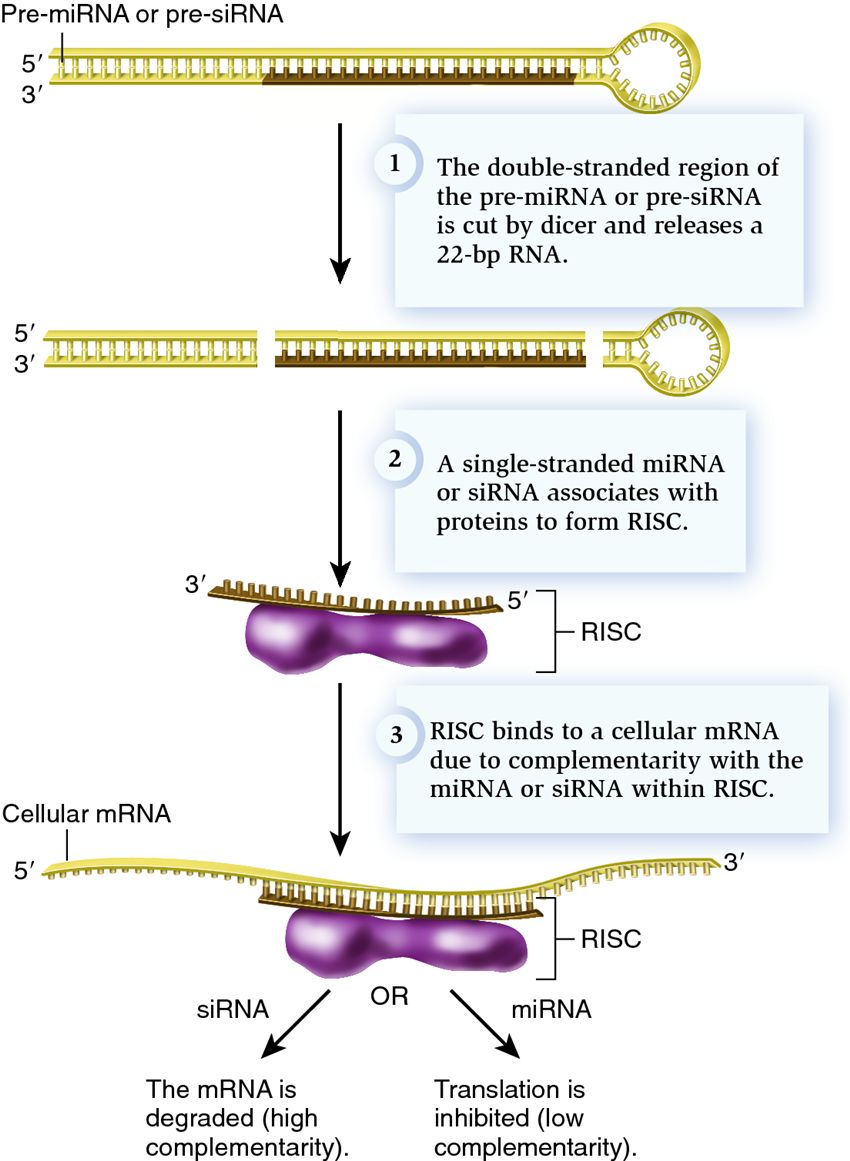 |
| Previous Image | Next Image |
| Description: Insight into the mechanism of miRNA inhibition came from the surprising results of Andrew Fire and Craig Mello, who showed that double-stranded RNA is very potent at silencing the expression of specific genes. In 2006, Fire and Mello were awarded the Nobel Prize for their studies aimed at understanding the effects of miRNA. MiRNAs are first synthesized as a pre-miRNA, which forms a hairpin structure because of complementary base pairing. The double-stranded region is trimmed to a sequence of 22 base pairs by an enzyme called dicer. One of the two strands associates with cellular proteins to become part of a complex called the RNA-induced silencing complex (RISC). The miRNA in the complex then binds to a target mRNA with a complementary sequence. On binding, two different things can happen. In some cases, the mRNA is degraded. This tends to occur when the miRNA and mRNA are a perfect match or highly complementary. Alternatively, the RISC can inhibit translation. This is more common when the miRNA and mRNA are not a perfect match or are only partially complementary. In either case, the expression of the mRNA is silenced. Fire and Mello called this RNA interference (RNAi), because the miRNA interferes with the proper expression of an mRNA.
Picture Stats: Views: 3922 Filesize: 115.75kB Height: 1161 Width: 850 Source: https://biology-forums.com/index.php?action=gallery;sa=view;id=459 Keywords: Mechanism of action of microRNA (miRNA) |
